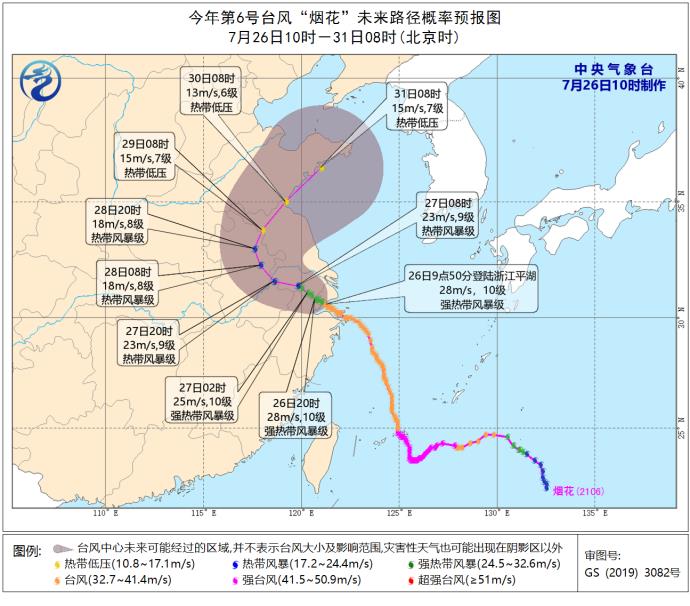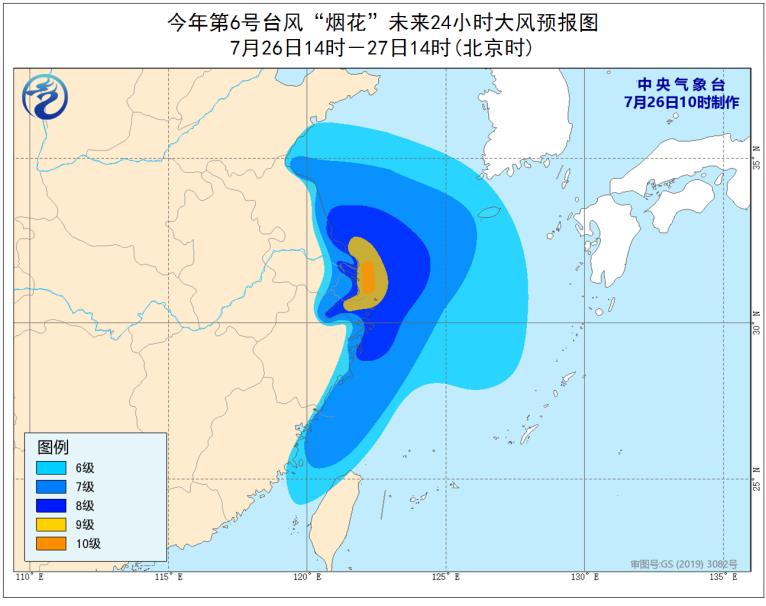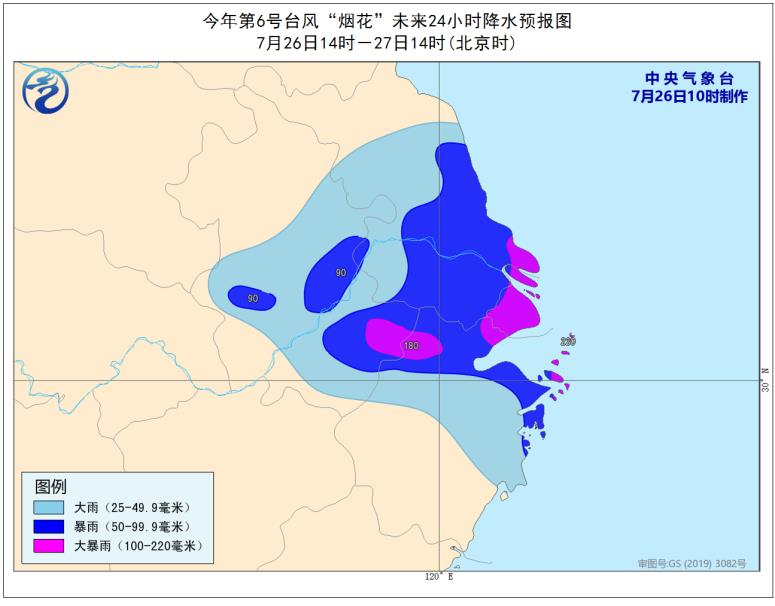CCTV News:According to the website of the Central Meteorological Observatory, the Central Meteorological Observatory issued a yellow typhoon warning at 10: 00 on July 26:
This year’s No.6 typhoon "Fireworks" weakened to a strong tropical storm level in the west of Hangzhou Bay at 9: 00 am today (26th), and its center landed again at 9: 50 am along the coast of pinghu city, Zhejiang Province. When landing, the maximum wind force near the center was 10 (28m/s), and the lowest pressure in the center was 978 hectopascals. At 10 o’clock in the morning, its center is located in Pinghu, Zhejiang, which is 30.7 degrees north latitude and 121.1 degrees east longitude. The maximum wind force is 10 (28 m/s), and the lowest pressure in the center is 978 hectopascals.
It is estimated that "fireworks" will move to the northwest at a speed of about 10 kilometers per hour, and its intensity will gradually weaken. It will move into Jiangsu at night today, turn to the northeast on the 28th and move into the Yellow Sea on the 30th.
Gale forecastFrom 14: 00 on the 26th to 14: 00 on the 27th, there will be 6-8 winds in the northern Taiwan Province Strait, the central and southern parts of the Yellow Sea, most of the East China Sea, the Yangtze River estuary, Hangzhou Bay, the southern coast of Shandong Peninsula, eastern Jiangsu, eastern Shanghai, eastern Zhejiang and northern Fujian, including 9-10 winds and 11 gusts in some sea areas in the northwest of the East China Sea and southwest of the Yellow Sea.
Precipitation forecastFrom 14: 00 on the 26th to 14: 00 on the 27th, there were heavy rains in north-central Zhejiang, Shanghai, south-central Jiangsu and south-central Anhui, among which there were heavy rains (100-220mm) in parts of northern Zhejiang, Shanghai, southeastern Jiangsu and southeastern Anhui.
Defense guide:
1. The government and relevant departments shall, in accordance with their duties, do a good job in typhoon prevention and emergency rescue.
2. Water operations and passing ships in relevant waters should return to Hong Kong to take shelter from the wind, strengthen port facilities, and prevent ships from anchoring, grounding and collision.
3. Stop large-scale indoor and outdoor gatherings and dangerous outdoor operations such as high altitude.
4. Reinforce or dismantle structures that are easy to be blown by the wind. Personnel should not go out at will. They should stay in windproof and safe places as far as possible, so as to ensure that the elderly and children stay in the safest place at home, and the dangerous people will be transferred in time. When the typhoon center passes by, the wind will decrease or stay still for a period of time. Remember that the strong wind will suddenly blow, and you should continue to stay in a safe place to avoid the wind, and the dangerous people will be transferred in time.
5. Relevant areas should pay attention to prevent flash floods and geological disasters that may be caused by heavy precipitation.

All the pictures in this paper are of the Central Meteorological Observatory.


关于作者